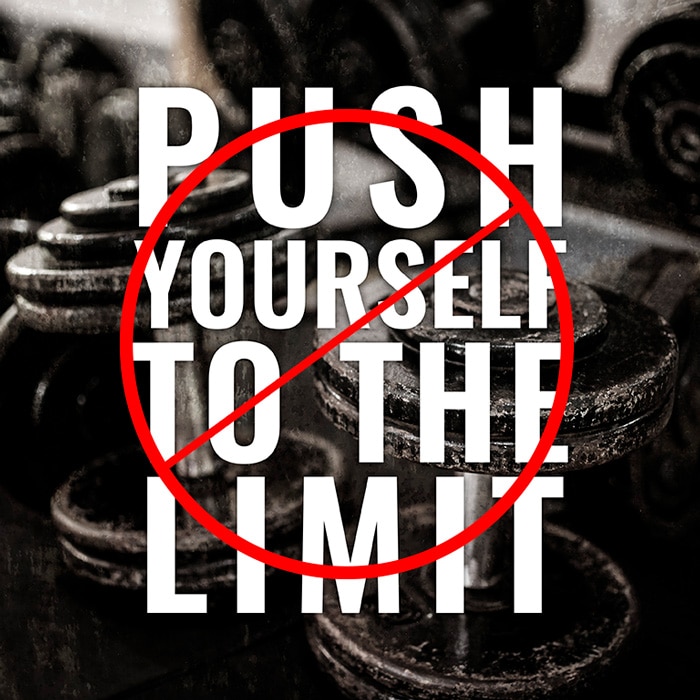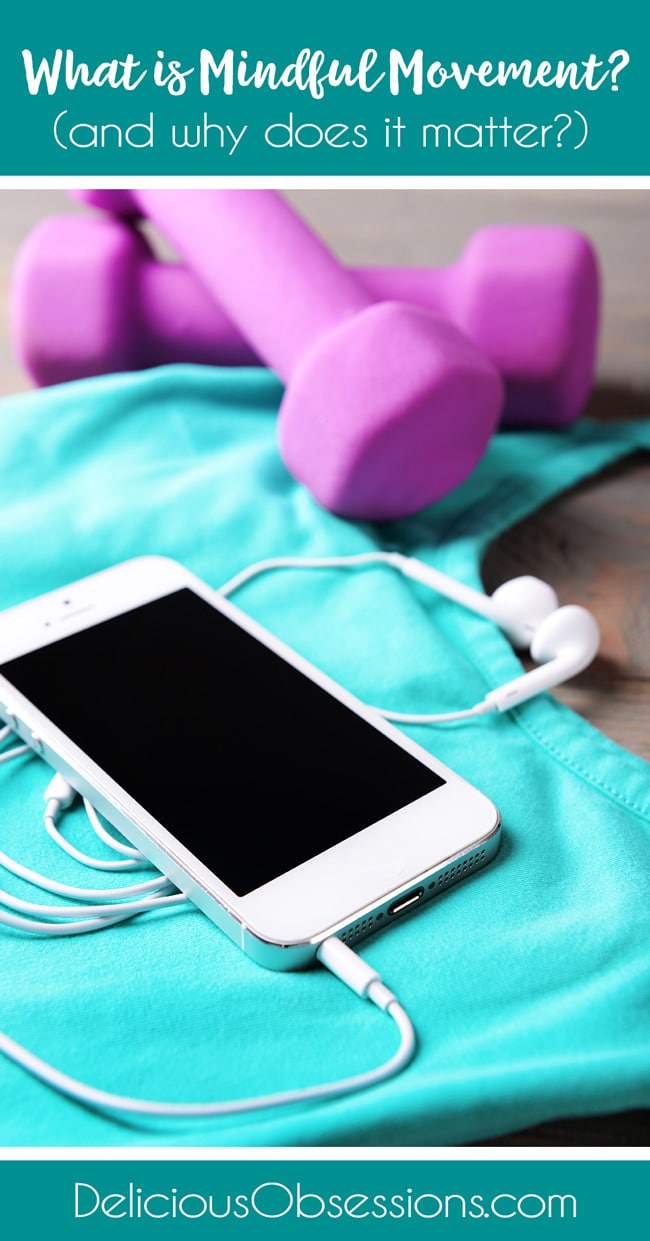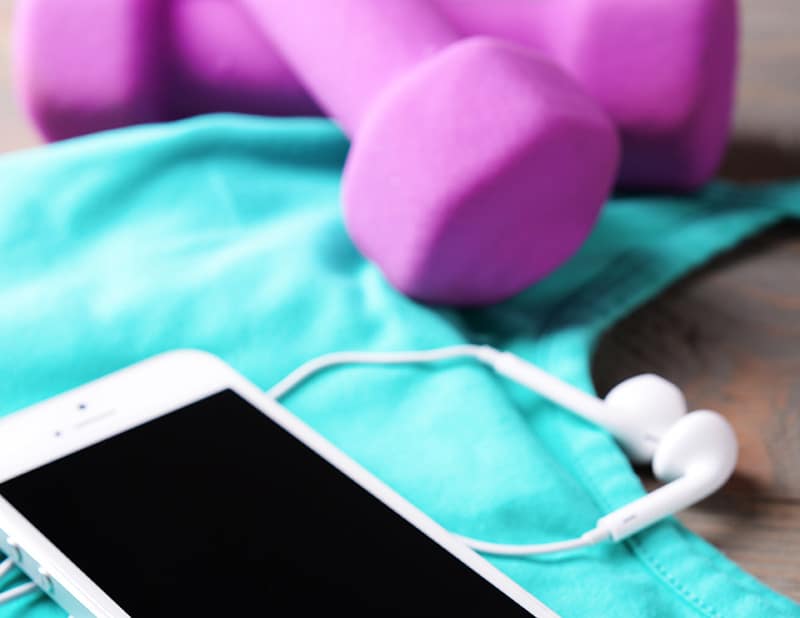FTC Disclosure: Delicious Obsessions may receive comissions from purchases made through links in this article. As an Amazon Associate I earn from qualifying purchases.Read our full terms and conditions here.
Are you tired of pushing yourself to exercise? Do you hate going to the gym, but think it’s just what you have to do to be healthy? It may be time to reframe exercise and view it in a new light — mindful movement! For once you can experience happiness and freedom around exercise and still improve your health.
Mindful movement.
In all honesty, when I use that phrase, most people look at me with a puzzled look on their faces. Not quite sure what it means. But, if I say the word “exercise”, everyone gets that.
What Is Mindful Movement?
Mindful movement takes traditional “exercise” and turns it on its head. It brings your intuition front and center and encourages you to really get to know your body and your capabilities where you are right now.
It allows us to recognize that we go through seasons in our life and health and how we move our bodies today might shift tomorrow. Or, what is more common in my work as a health and lifestyle coach, is that how we once moved our bodies (pre-chronic illness or during disordered eating/body image issues) is no longer the way we are physically able to (or want to) move today.
Depending on who you talk to, the definitions of “mindful movement” will vary, but my definition is:
moving your body in an intuitive way that is joyful and fun, rather than punishing and exhausting.
This form of “exercise” should never leave you feeling depleted, burnt out, or too exhausted to enjoy life or feel good about yourself.
Why Is “Exercise” a Problem?
Exercise in and of itself is not necessarily a problem. That said, many of us have a really unhealthy history with exercise, which is one of the reasons why I don’t always use that term when I’m writing or talking about the topic. I find that for some “exercise” can be a trigger word, so I prefer to skip it depending on who I’m talking to.
The truth of the matter is that we have grown up in a culture that celebrates thin bodies and shames fat bodies. In order to get that thin body, we are told to just eat less and exercise more — advice that has led to an increase in eating disorders and unhealthy relationships with our body.
“Exercise bulimia” is a real thing, friends. Google it.
On a side note, the whole “calories in, calories out” theory has been busted time and time again (a quick Google search will yield tons of results, including this short read from Harvard Medical School), yet people still believe that health and fitness are as simple as burning more calories than they consume.
If we eat something we “shouldn’t” eat the night before, we slave away in the gym the next day for an extra hour to compensate. If we want to eat something later we “shouldn’t” eat, we slave away in the gym in the morning to get in a calorie deficit so we don’t have to feel guilty about eating it.
But let’s face it.
That guilt is still here and likely we will exercise even longer and harder the next day to compensate for our “bad” behavior.
I look back on all the years that I spent slaving away in the gym feeling guilty for something I ate. Punishing myself with more exercise than I could healthfully tolerate at the time. It makes me sad…
Don’t get me wrong. I’m not saying we shouldn’t participate in vigorous exercise (if we are physically and emotionally capable). I’m saying that there is a line that is crossed when exercise moves from something we do because we enjoy it, into something we do as a form of punishment or compensation for our “bad” behavior.

The Dangers of Too Much Exercise
Our bodies need movement. We need exercise. We need to keep the blood moving and the lymph flowing. We need to gently challenge our cardiovascular system and our lungs. Exercise supports brain health and improves immune function.
These ^^ are all good things, when done the right way, with the right mindset.
That said, exercise becomes dangerous when it becomes compulsive or obsessive. When we adjust our whole life to make sure we always have 1, 2, 5 hours in the gym a day. When we skip family and social events because we need to work out (or we’re afraid of the food that will be there). When we sacrifice sleep because we need to “hit the gym”. We are told to turn on “beast mode” and “push yourself to the limit”, which is SO damaging to our minds AND bodies.
When exercise becomes our primary driving force in our lives, rather than just one of the many tools we use to maintain health, we are treading on very thin ice and need to seek help. Not only does over-exercise cause issues for us emotionally, but it also creates problems physically. Here are some examples:
-
Extreme endurance exercises (think marathons, triathlons, or even just too much distance running) can lead to enlarged arteries and heart damage. It can cause scar tissue and thickening of the heart’s wall. (source)
-
One study found that women who exercised strenuously every day we more likely to suffer from a stroke or heart attack than those who exercised less frequently or more moderately. (source)
-
Women who over-exercise are at higher risk of amenorrhea (losing their menstrual cycle), bone loss, malnourishment, and eating disorders. (source)
-
People over-exercise can experience mood changes due to the stress and inflammation that it puts on the body, which interferes with hormone production and regulation. (source)
-
Insomnia, mental fatigue, brain fog, and elevated resting heart rates are also common among those who exercise too much. (source)
-
And more… there is a looooooong list of drawbacks to over-exercise, but I’ll stop here.
Please note that in the vast majority of compulsive exercisers their behavior does NOT stem from a place of wanting pristine health. Instead, the root cause is most often linked to a desire for their body to look different, based on what our society has deemed beautiful or acceptable.
It’s important to remember that good health does not require hours of running, lifting weights, or slaving in the gym. Physical fitness can be obtained through a variety of less strenuous methods (think walking, yoga, rebounding, dancing, hiking, chasing your kids, washing your car, etc.).

Why Mindful Movement Matters
Mindful movement matters because it moves the focus from the outside world to our inside world. It teaches us that our bodies are what they are and they are fully capable of being loved and respected, no matter the size.
Moving our focus inward reminds us that we have value. We have worth. We are capable of great things. We don’t have to listen to what society tells us, we can listen to what WE tell us.
Mindful movement matters because it allows us to uncover ways of moving our bodies that feel good and make us happy. It helps us tune into our inner wisdom here and now, and then make empowered decisions about how we are going to treat ourselves on any given day.
Mindful movement matters because it takes into account our physical, mental, and emotional limitations and honors them rather than pushing them aside.

Examples of Mindful Movement
Mindful movement can truly be anything you want it to be. The only guidelines are:
-
Are you moving your body in this way because you truly enjoy it or because you feel obligated (by your spouse, friend, doctor, society, etc.)?
-
Are you being mindful and respectful of your current mental, emotional, and physical limitations?
-
Is the movement creating joy or is it creating stress?
-
Do you feel energized and uplifted after participating in the movement or are you run down and exhausted?
-
Do you truly LIKE this movement and would participate in it regardless of whether it was good for your health or not?
Here are some examples of how someone could practice the art of mindful movement in their own lives.
Person #1 is suffering from a chronic illness. In most cases, overly strenuous exercise is the very LAST thing someone with chronic illness(es) should be doing. So instead of forcing herself to go for a run, she chooses to go for a walk around the park and do a gentle yoga video at home later that day.
Person #2 is aware of her physical limitations, but she woke up feeling extra energetic today. She decides to do something different and does a short HIIT (high-intensity interval training) session on her rebounder — with full permission to stop any time she wants or if things feel like they’re too much. She decides that the next time she has a surge of energy like this, she wants to experiment with some kettlebells for a little strength training, but knows that she needs to be cautious not to overdo things on any given day.
Person #3, woke up feeling super tired and run down. She’s under a lot of stress at home and work and even though she loves her daily walks, she thinks it would be a good idea to skip it today. Instead, she decides to spend some time on her patio, soaking up some sun, and doing some gentle stretching while she meditates.
Sometimes the best mindful movement is recognizing that taking the day off of moving is exactly what your body needs. When you practice mindful movement, YOU get to make these empowered choices for yourself every day.
And THAT, my friends, is why mindful movement matters.


